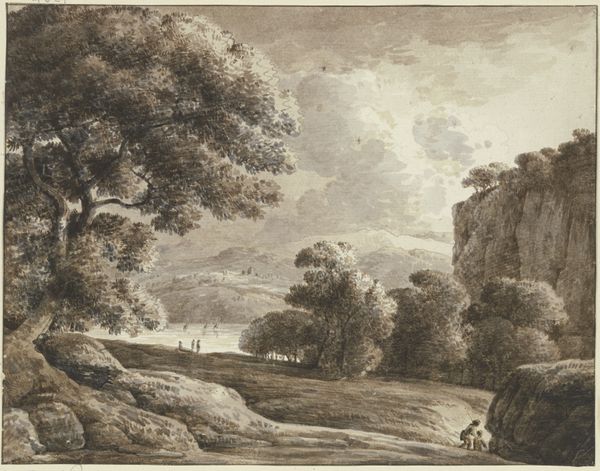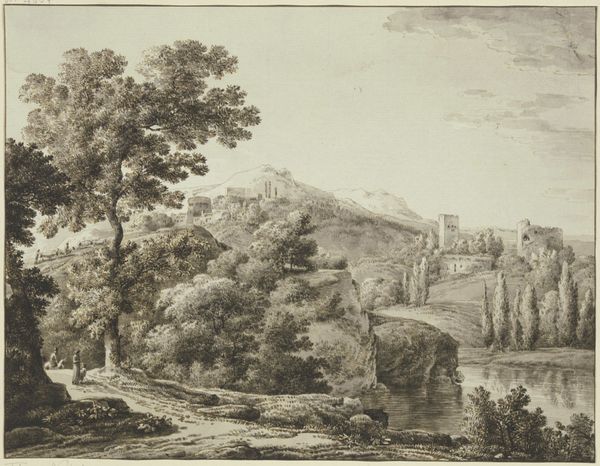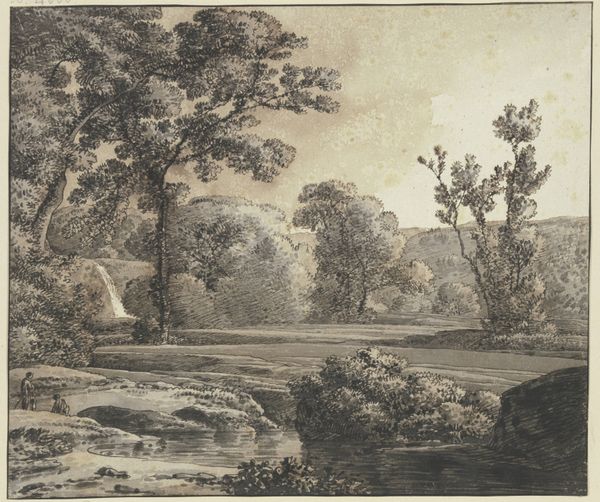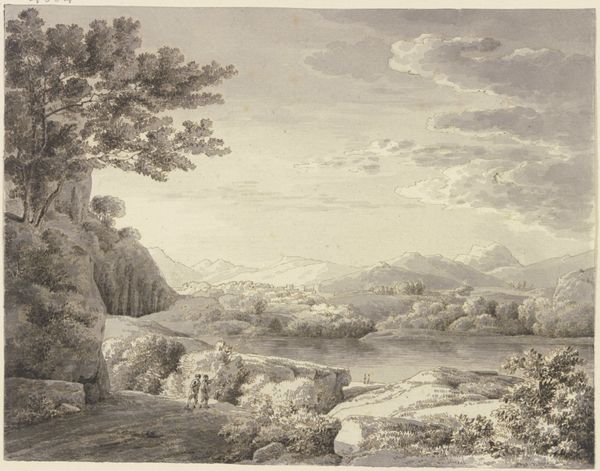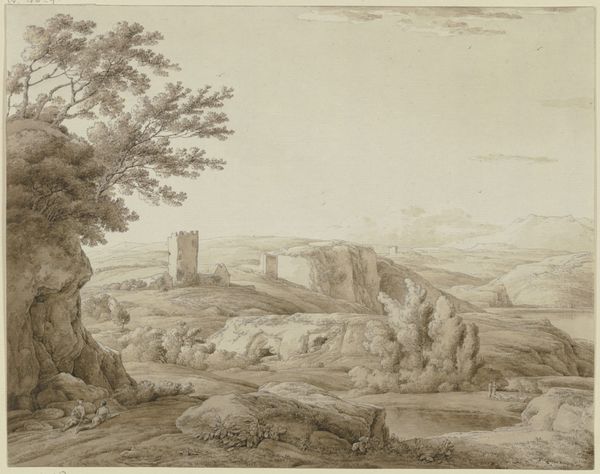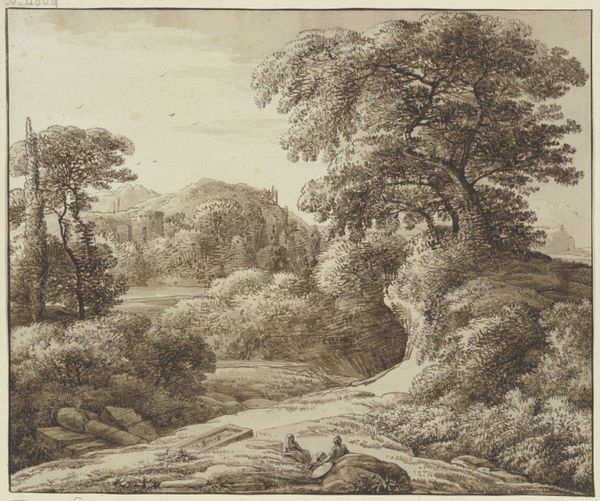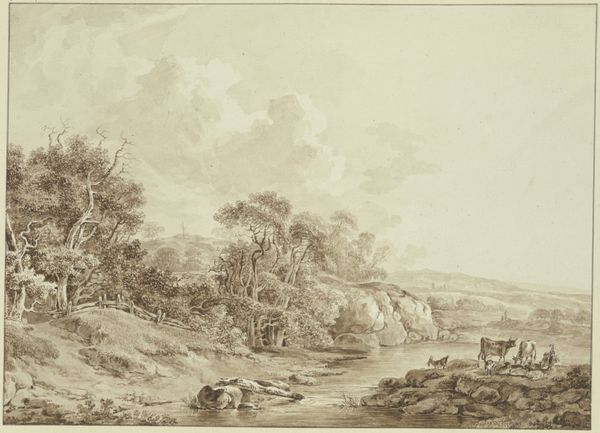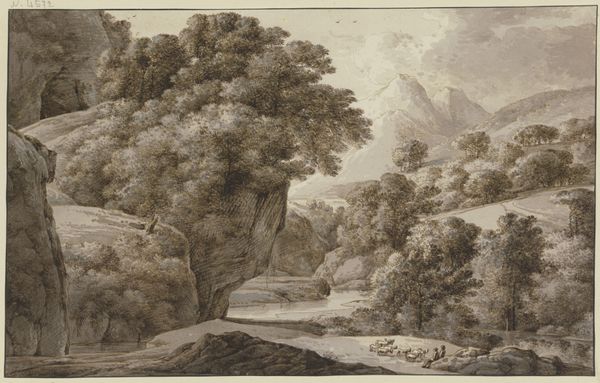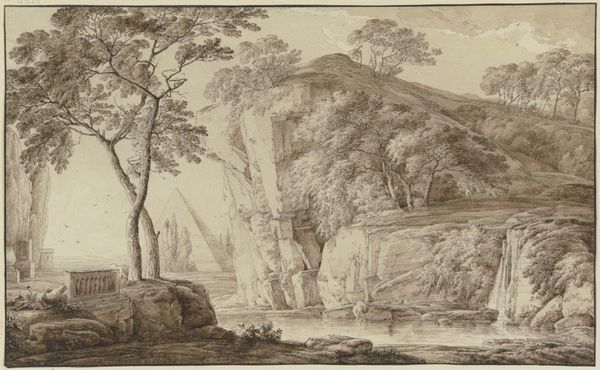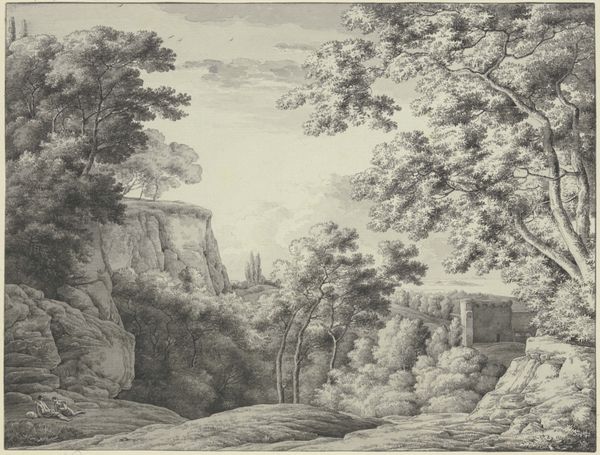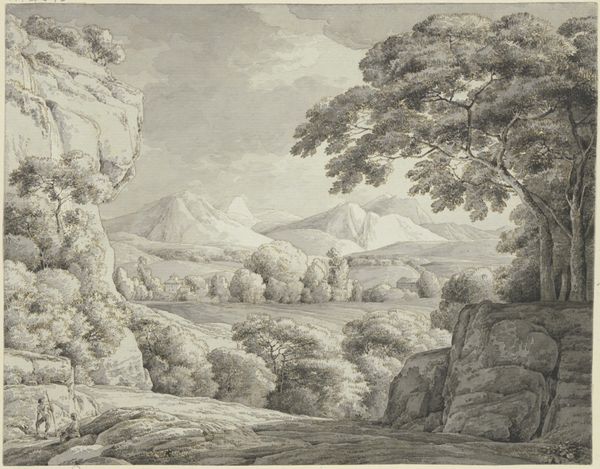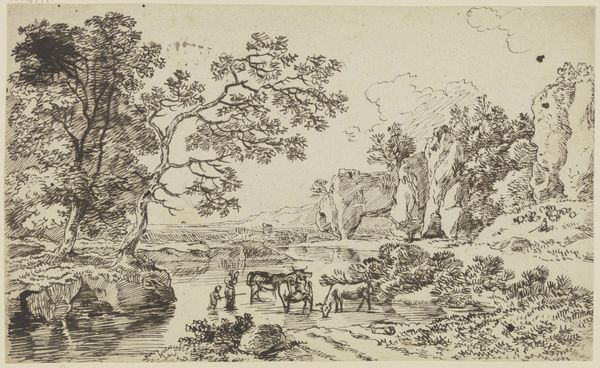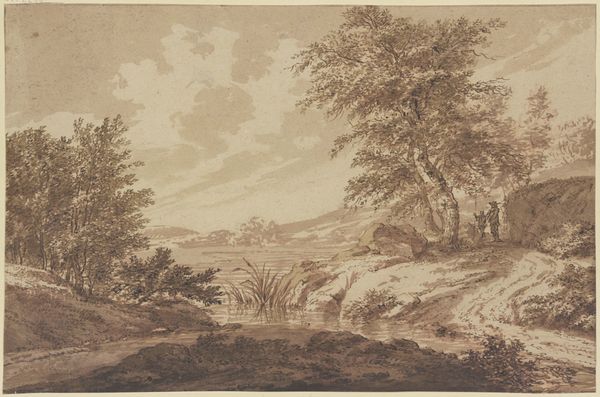
drawing, ink, indian-ink
#
landscape illustration sketch
#
drawing
#
amateur sketch
#
toned paper
#
pencil sketch
#
landscape
#
charcoal drawing
#
possibly oil pastel
#
ink
#
german
#
pencil drawing
#
indian-ink
#
15_18th-century
#
mixed medium
#
pencil art
#
watercolor
Copyright: Public Domain
Editor: Here we have Franz Kobell’s "Landschaft mit Fels und See", a landscape drawing in ink and watercolor. The scene is really peaceful, and I’m drawn to the contrast between the detailed foreground and the hazy mountains in the distance. How do you interpret the composition of this drawing? Curator: The key to this piece, I think, is the balance between contrasting textures. Consider how the artist has juxtaposed the density of the foliage on the left with the smoother, almost planar surface of the rocks on the right. What effect do you think that contrast creates? Editor: It does add depth, making the foliage feel closer. Also, the lines are so defined in the vegetation, compared to the mountains that seem more suggested than described. Is that on purpose? Curator: Precisely. Kobell utilizes line and wash to structure our reading of the landscape. The stark linearity, particularly in the depiction of the trees, acts as a structural element. Observe also how the layering of tones guides our eye—a deliberate use of chiaroscuro to model form. Editor: So, the emphasis isn't necessarily on accurately portraying a specific location, but more about the formal qualities of the landscape itself? Curator: Precisely. The drawing, at its core, is a study in form. Forget what it represents for a moment, and appreciate instead the elegant orchestration of line, tone, and texture. What new observations can you make when focusing on the purely visual elements? Editor: I see now, without trying to picture the place, I am noticing how light moves across the piece, especially how it gives dimension to the rocks. I see it as an experience of nature, rendered abstractly. Curator: Indeed. Understanding art through form encourages such close observations and deeper interpretations. Editor: This close visual analysis has truly broadened my understanding; thank you.
Comments
No comments
Be the first to comment and join the conversation on the ultimate creative platform.
